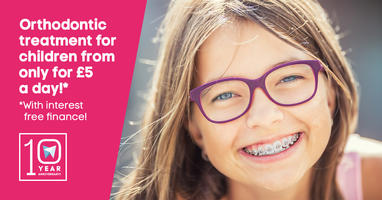Orthodontic treatment is using a metal brace to align teeth by moving them through the hard and soft tissues in order to reorganize them in a healthy and aesthetically pleasing manner by way of a controlled inflammation of the periodontal tissues. After orthodontic treatment is finished, the inflammation will be finished. The soft tissues, as well as the hard parts of the alveolus, will return to their original form (more or less), and this means that the teeth will eventually, gradually, bit by bit, piece by piece shift back to their original position. To prevent this, an orthodontic retainer is made.
The orthodontic retainer
The orthodontic retainer is a piece of plastic with a wire through it. The plastic is molded to fit your teeth, and it keeps your teeth in their new, healthy position by resisting the forces of the soft tissues that try to return them to their original, unhealthy state. Many people think that the retainer is optional or somehow less important than everything else encountered during the course of the orthodontic treatment, but this could not be further from the truth. The orthodontic retainer is an integral part of the orthodontic treatment; it is the final step, but it is just as important as the steps leading up to the retainer. Sometimes the retainer can be worn for only a short time, sometimes it has to be worn only at night during sleep, and sometimes it needs to be worn all the time for the rest of the patient’s life.

Consequences
The consequences of not wearing a retainer as prescribed are that the orthodontic treatment becomes null and void, and needs to be redone in its entirety. It may be easier the second time around, as the teeth have been through it once already and may be quicker to accept their old-new position, but the treatment will still need to be repeated. This means you will have to pay for the braces again and spend time in them again, from the beginning. Usually the teeth keep some of their characteristics after orthodontic treatment, and only a part of the treatment needs to be repeated, but certain characteristics, like the twisting of the canines, for example, are sure to recur without the help of an orthodontic retainer. All of the negative aspects of the original tooth positions will return (e.g.: harder to clean, scratching each other, etc.). However irritating the retainer may seem, it’s certainly easier than repeating the entire orthodontic process.
image: 1.

